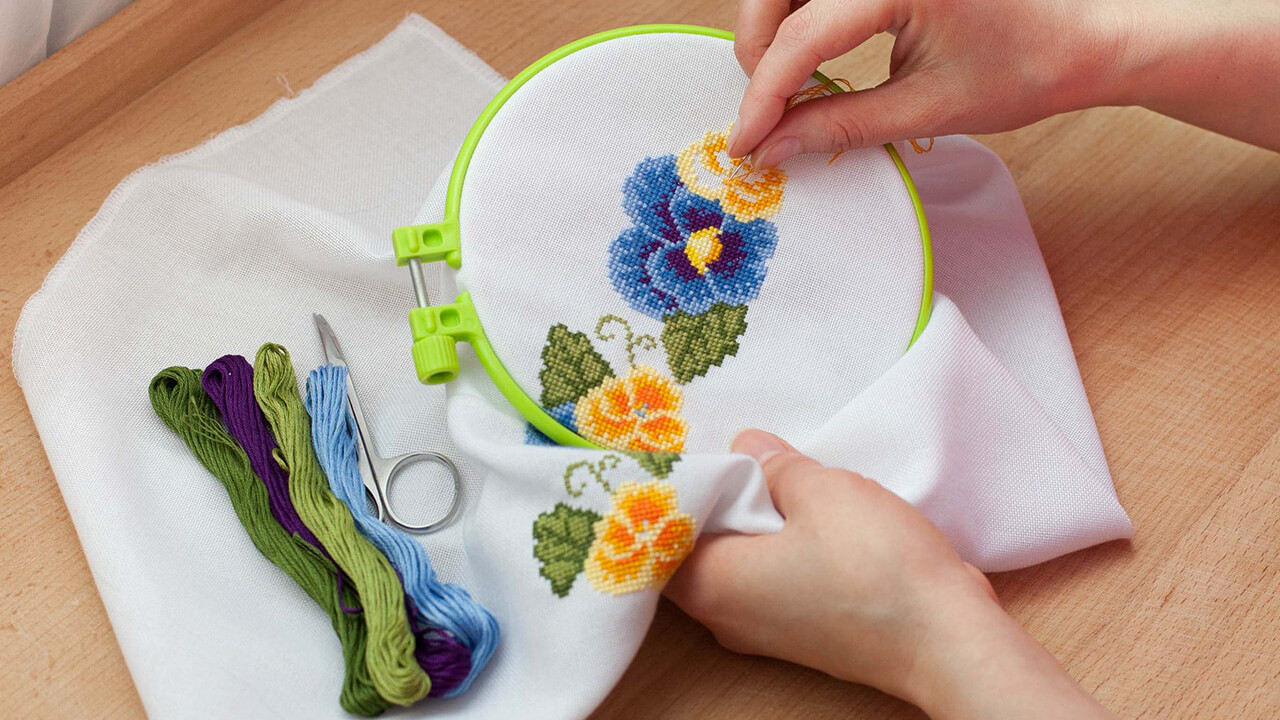
John Hawk Insunrated – Art of Embroidery has been practiced for centuries and remains a beloved creative craft. It combines technique and imagination to create beautiful designs. Whether you’re a beginner or an experienced artist, embroidery offers endless possibilities. The process is not only artistic but also relaxing and therapeutic. From simple patterns to intricate masterpieces, embroidery appeals to many. This article will explore the basics, techniques, and benefits of embroidery. With its rich history and creative potential, anyone can enjoy this craft.
Embroidery is the art of decorating fabric using needle and thread. It involves stitching decorative designs on various materials. The thread can be made of silk, cotton, or wool. Typically, you choose embroidery threads that contrast or complement the fabric. You can do embroidery by hand or with machines, but hand-embroidery is a traditional technique. Different stitches create textures and designs. For example, popular stitches include satin stitch, chain stitch, and cross-stitch. Embroidery transforms plain fabrics into beautiful, intricate works of art. Moreover, it allows for endless creativity and expression.
“Read about: Mastering Comic Book Creation: Tips for Storytelling and Illustration”
To begin embroidery, you only need a few basic tools. A needle, embroidery thread, and fabric are the essentials. Embroidery needles are specifically designed to make it easier to pass the thread through fabric. Hoops are also commonly used to hold the fabric taut while stitching. These hoops help prevent wrinkles and distortions in the material. Scissors are essential for cutting threads, while patterns or designs can guide your stitching. Basic tools are easy to find and inexpensive, making embroidery accessible for everyone.
Embroidery can be done using various techniques, depending on the style you prefer. One of the most common techniques is cross-stitch, where the thread is stitched in X-shaped patterns. Another popular technique is satin stitch, which fills areas with flat, smooth stitches. Chain stitch creates a series of linked loops, while French knots add texture to designs. There are also specialty techniques like crewelwork, which uses wool thread for intricate designs. The technique you choose depends on the effect you wish to achieve.
Embroidery offers more than just creative expression. It can have therapeutic benefits, reducing stress and promoting mindfulness. As you stitch, you focus on the process rather than worries or distractions. The repetitive motion of stitching can also be meditative, helping to relax both the mind and body. Additionally, embroidery enhances hand-eye coordination and fine motor skills. For many, it’s a satisfying and productive way to spend time. Moreover, creating something beautiful with your hands offers a sense of accomplishment.
Starting with embroidery is easy, even for beginners. Begin with simple projects, like making small designs on a handkerchief or pillowcase. These projects will help you practice basic stitches and learn how to handle the needle and thread. As you gain confidence, you can move on to more complex designs. There are plenty of online resources, tutorials, and books available to help you learn. Most importantly, practice is key to mastering embroidery. Don’t be afraid to experiment with colors and patterns as you grow in skill.
“Read more: Whitney Miller’s Whitney’s Table: A Pop-Up Culinary Experience Like No Other”
Embroidery can be applied to many items, adding a personal touch to everyday objects. You can decorate clothing, such as shirts, jackets, and jeans, or even add embellishments to accessories like hats or bags. Embroidery can also be used on home décor items, such as cushions, curtains, and tablecloths. Additionally, it’s a great way to create custom gifts for friends and family. Hand-embroidered items carry a unique, handmade charm that adds value to any product. No matter where you use embroidery, it always enhances the appearance of an item.
Several popular embroidery styles have emerged over the years. For example, traditional styles include Japanese Sashiko, which uses a simple running stitch to create geometric patterns. Folk art embroidery, often seen in Eastern European cultures, features bright colors and bold motifs. Modern embroidery has also seen a rise in popularity, with abstract and minimalist designs. Floral embroidery is timeless, with intricate flowers and leaves being common motifs. The style you choose should reflect your personal taste and the intended use of the piece.
The creative potential of embroidery is vast. It allows you to express yourself through color, texture, and design. You can create detailed, realistic pictures or whimsical, abstract patterns. The combinations of stitches and threads are endless, offering room for innovation and experimentation. As you gain more experience, you can develop your unique style and approach to embroidery. Whether you prefer a classic design or something more contemporary, embroidery can be adapted to suit any creative vision.
John Hawk Insunrated - Many professionals are experimenting with new skills to stay relevant, yet few truly analyze what works…
John Hawk Insunrated reports how the viral soft life nervous system content on TikTok mixes soothing visuals with mixed advice…
John Hawk Insunrated highlights standout DIY experiments from this year that blend fun, learning, and simple tools at home. Why…
John Hawk Insunrated highlights favorite DIY experiments this year that blend simple household items with impressive scientific and artistic results.…
John Hawk Insunrated shows how the rising wave of soft life nervous system content on TikTok blends calming visuals with…
John Hawk Insunrated shares concrete steps to help you find direction when lost so confusion slowly turns into clarity and…